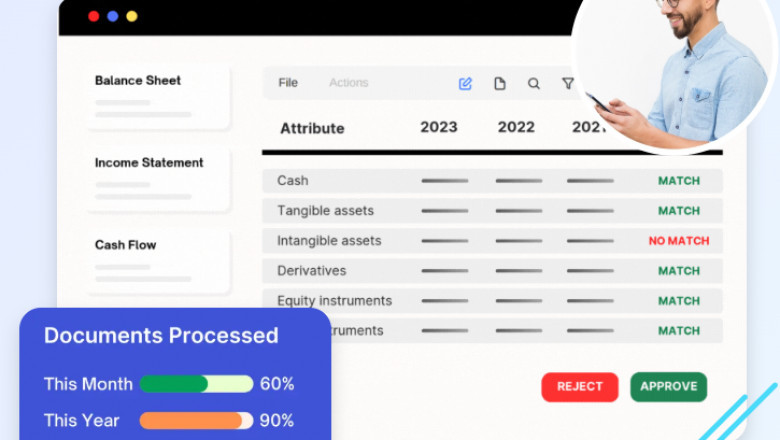views
Financial Spreading for Small Business Loans: 5 Tips Lenders Should Follow
How do you pick the right firm to lend to? Do they have the cash to pay back? You need to check their funds. That is where Financial Spreading helps. It shows if a firm has a strong cash flow and can easily meet its loan needs.
It helps lenders see risks that may not be clear at first glance. If a firm’s cash is tight, a loan may not work for them, and if a firm makes more than it spends, a loan could be a safe bet.
But how do you check this to ensure you make the right move? There are smart ways to look at facts before giving a loan. Lenders must check more than just cash in the bank because a deep check can save firms from debt and help lenders pick the right choice for a safe deal.
Look at Cash Flow First
Cash flow is key because a firm must bring in more than it spends to stay in good shape for loan paybacks. A loan may not work well for them if they do not have steady cash. Look at how much cash comes in each month and compare it to what goes out.
If more is going out, that is a red flag because the firm may struggle to pay back what it owes. Cash must be strong to pay a loan; if the firm gets paid late, that is a risk to the lender.
A strong plan must be in place to keep cash coming in on time. Use financial spreading to see past trends and patterns to help you make the right choice.
Read the Income Sheets Well
Do not just look at profit numbers alone because a firm may show high sales, but costs may eat up most of that cash, which means there is not much left to work with. Check the full sheet and go through each section.
How much of that cash is pure profit, and how much is tied up in costs? A good sheet will show how a firm works and give a full view of its funds. Look for trends in past years.
If costs go up each year while profit stays the same, there may be a risk because the firm is not scaling safely. A lender must know if it can hold cash well and run a firm that can stand over time.
Study the Debt-to-Equity Ratio
A firm must not owe more than it owns because too much debt is a big risk. If a firm has too many loans, how will they repay a new one? A firm with low debt is a safer bet because they have more room to take on new loans.
Look at past loans and check if they paid on time or had delays. A firm that takes loans but does not pay on time is a risk because it shows that it does not have a strong plan to manage funds.
If the debt is too high, they may not have room for more, meaning lenders must think twice before giving out cash.
Check Their Bank Deals
A firm must have clean bank deals, which means no bounced checks, late fees, or past-due charges from banks. If they have bounced checks or paid late, that is a bad sign for lenders because it shows they may not manage cash well.
Look at how they deal with cash flow in their bank and if they keep up with due dates. If they keep their cash flow strong and do not run into bank issues, they are safe to lend to because it shows they have good habits. Lenders need firms that can keep cash in check and meet deadlines without struggle.
Look at Their Past Growth
Has the firm grown each year, or has it gone up and down? A good firm must show slow and strong growth over time because a firm that jumps up one year and falls the next may not be stable. If they made big cash one year but lost much the next, that is a sign of risk for lenders.
A lender must check how steady they grow because growth that is too fast or too slow can both be risks. Financial Spreading can show long-term growth, and if the firm has been steady for five years or more, they may be safe to lend to without worry.
Final Thoughts
Lenders need to be smart when they give out loans because a bad move can lead to a big loss. Loans are risks, but smart steps can help cut those risks down and make the process safe.
Financial Spreading is key to picking the right firm because it helps lenders fully see all facts. Look at cash flow first and read the full sheets. Check past loans and see how they deal with banks. Look at past growth and know their field.
Check if they own their gear and if they have a cash plan. All these steps make loans safe and cut risk. Lenders who use these will not fail because they will pick strong firms and stay safe while doing business.






















Comments
0 comment